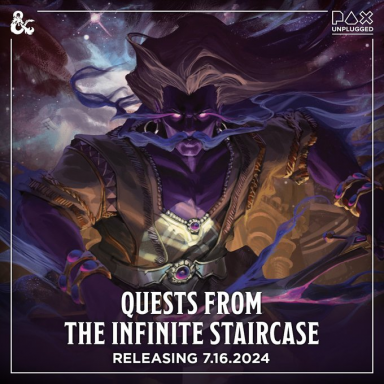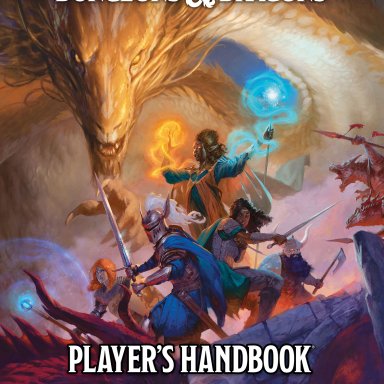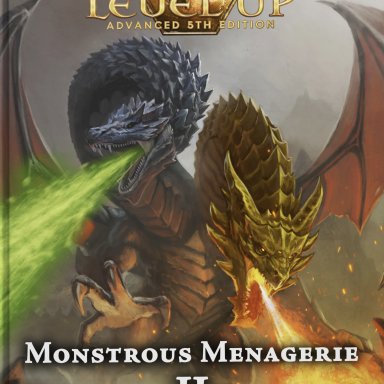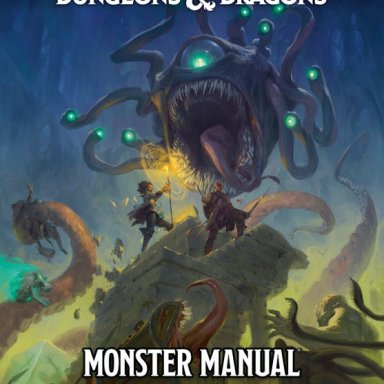You are using an out of date browser. It may not display this or other websites correctly.
You should upgrade or use an alternative browser.
You should upgrade or use an alternative browser.
Mythological Figures
Recent & Upcoming Releases
-
June 18 2024 -
July 16 2024 -
September 17 2024 -
October 1 2024 -
November 12 2024 -
February 18 2025
Mythological Figures: Don Quixote (5E)
Today’s entry in Mythological Figures is the beleaguered slayer of windmills, the man of La Mancha, the greatest knight errant (errant knight?) of Spain: Don Quixote!
Mythological Figures: Sun Wukong (5E)
Here I was thinking King Arthur was going to be hard! For every bit of popularity the lord of Camelot has in the west, the Handsome Monkey King/Great Sage, Equal of Heaven/Victorious Fighting Buddha matches him in the east. You may know him through Goku but to most of the world he’s Sun Wukong!
Mythological Figures: Baba Yaga (5E)
The Witch of Wilds, grandmother of Satan, gourmand of children, and crone of crones is today’s star on Mythological Figures: Baba Yaga!
D&D 5E Mythological Figures: Thor Odinson (5E)
The Gods of EN World have spoken and demanded their brethren, the master of lightning and storm: Thor! A lot of folks have requested Thor but I was asked to move him up the Mythological Figures queue so here he is! There is a plethora of mythology on Odinson here—check out Wikipedia or the Ancient History Encyclopedia for more information. The really important bits that get into the stats below are his belt, gloves, and of course his hammer. I really blew it out with Sun Wukong however (he'll post soon!), so today let’s focus on the build because Thor’s extremely well known these days (although as a blonde fellow and not a redhead which is strange).
Mythological Figures: Julie d'Aubigny aka La Maupin (5E)
Today's entry in Mythological Figures is another historical figure that’s taken hold of some zeitgeist and earned a place in today's popular culture. Julie D'Aubigny ("La Maupin") started appearing on social media last year and for good reason--she was a straight up badass.
D&D 5E Mythological Figures: Gilgamesh (5E)
As last week was a great example of a Mythological Figure from the perspective of transference of media between cultures (Aladdin’s unique place via the ancestral “game of telephone”), now we’re going way back to a figure even older than our first entry—GILGAMESH! As you can see from the artwork for today’s entry there’s really not a lot about him in popular culture until relatively recently, so the best depictions of this God-King are thousand and thousands of years old.
Mythological Figures: Coyote (5E)
Mythological Figures: Aladdin (5E)
What a fantastic subject for Mythological Figures! Aladdin is our first entry from the Middle East and an interesting example of what makes a myth just that—for starters, despite being the most popular character from 1,001 Arabian Nights, he’s a late addition to the book by a Frenchman translator (who heard it from a Syrian storyteller from Aleppo, a Maronite scholar named Youhenna Diab). Incidentally as well despite what we’re all likely to think, the character was originally Chinese. This amalgamation of misconceptions and changes (from storyteller to translator to now) are one of the defining traits of a myth and what makes it a wonderful cultural artifact. Mythology is win.
Mythological Figures: Joan of Arc (5E)
The popular Mythological Figures series continues with another character for your 5E games! Born to a peasant family (although her father headed the local watch and collected taxes in addition to farming), Joan of Arc was raised inside of a territory loyal to the French but surrounded by pro-Burgundian forces (an alliance between some of the French aristocracy and England). Starting at the age of 13 she began to have visions of the saints beseeching her to drive out the English and see to the coronation of the Dauphin (Charles VII) to Reims as the rightful ruler of France.
Mythological Figures: Miyamoto Musashi (5E)
Mythological Figures focuses on Fifth Edition builds for persons too big for true history like Achilles and Sir Lancelot, but some individuals absolutely distinguished themselves to an equal status. Perhaps my favorite of these is arguably one of the most skilled people to have ever picked up a sword: Miyamoto Musashi!
D&D 5E Mythological Figures: Sir Lancelot (5E)
Welcome to the second installment of Mythological Figures, a column for introducing icons from history to your Fifth Edition game. Last post featured Achilles but today we’re pushing the clock forward to the Arthurian age to design Camelot’s second greatest—and perhaps most beleaguered—knight: Lancelot du Lac!
Voidrunner's Codex
Latest Posts
-
-
-
-
Press [Chaosium] Vote for Chaosium creators in the 2024 ENNIES - voting is now live!
- Latest: Michael O'Brien
-
-
-







![Quick Gen Things Found Volume 1 Fantasy Items [Ennead Games]](jpg/press-release-red-rubber-stamp-over-white-background-88070630.jpg)
![[Chaosium] Cover reveal: The Cthulhu by Gaslight Investigators Guide will be available in exclusive pre-release at Gen Con](jpg/451253370-958125329658387-5070651187200593285-n.jpg)
